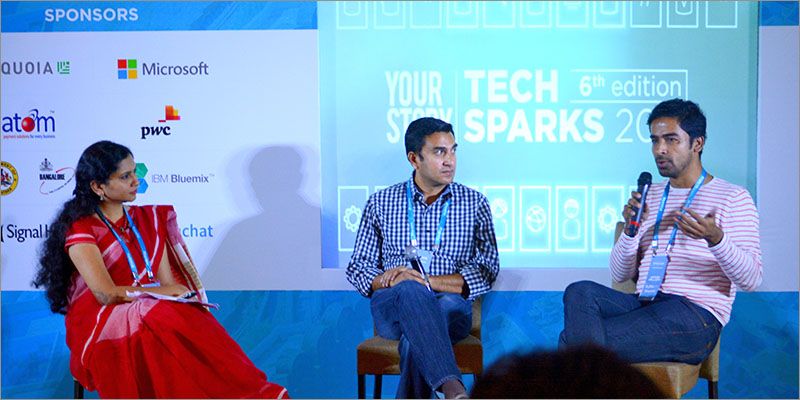Home secrets to growth hacking

Walk into any tech startup office today and you will hear one phrase getting thrown around a lot: ‘growth hacking’. Many startups in India believe that just spending money on marketing or giving steep discounts—both result in growth in users—is growth hacking. This is not true. During TechSparks 2015, YourStory tried to unlock some real growth hacking secrets of two young but happening startups, Livspace and HouseJoy.
Anuj Srivastava, Co-founder and CEO of online interior design and furniture portal Livspace, said a true growth hacker is one who is able to drive disruptive growth through innovative digital tactics, usability-driven engineering or content marketing. “The only economic fundamental that growth hacking drives is that you should be able to grow your business without really spending as much as other, more traditional businesses would do,” said Anuj.
For Housejoy and Livspace, the challenges were different and so were the solutions they attempted. Saran Chatterjee, CEO of online home services firm HouseJoy, said the company had the advantage of high demand. It started with operations in Bengaluru in January and is now present in 11 cities.
However, ensuring quality supply of service providers like plumbers and gaining the trust of customers were the challenges. Saran, who was earlier VP-Products at Flipkart, said digital worked very well in Bengaluru, but that was not the case when Housejoy launched operations in Delhi-NCR and Ahmedabad. “In Delhi, digital was generating sporadic supply. The city is so vast; you get one order from Faridabad and then another from Noida. We then focussed on a couple of localities and went society-by-society,” said Saran. “In a city like Ahmedabad, digital doesn’t work at all.” So the company uses the more traditional feet-on-the street approach with people going door-to-door to spread awareness. “It is a high-touch model, but the repeat rates are higher. Each city is unique,” he said.
Livspace’s Anuj, who was earlier Global Head of Product Marketing for Google Commerce, said creating great content is what helped them best. Livspace’s technology auto-generates hundreds of realistic looks based on the portal’s catalogue of products. “If you create beautiful, useful content on the internet, people use it,” said Anuj.
He said young startups have to work within their limitations, which primarily is building credibility with little cash to spend. “We had few choices—create content and use Facebook and Google SEO well,” he said. Anuj added he also ensured that news like funding and acquisitions were announced in quick succession to capture space in the minds of users.
Livspace, which operates only in Bengaluru, has also made three acquisitions this year to speed up growth. In March 2015, it acquired design community and marketplace for consumers and design professionals DezignUp and in May, acquired curated online network of interior designers Dwll.in. In September, it bought out YoFloor, a mobile platform offering a virtual trial room for home design decisions.
The panellists were also candid about their mistakes. Housejoy’s Saran said that the company realised that relentlessly pushing the marketing lever was not enough. “We are realising that we run the risk of missing out on the customer experience side. In our frenzy to grow, we forgot about sustainable growth. We feel that the value proposition has to be stronger,” he said.
Finally, the message that the two tech veterans gave to entrepreneurs was: focus on what you do best, build virality within the product and aim for sustainable growth.











